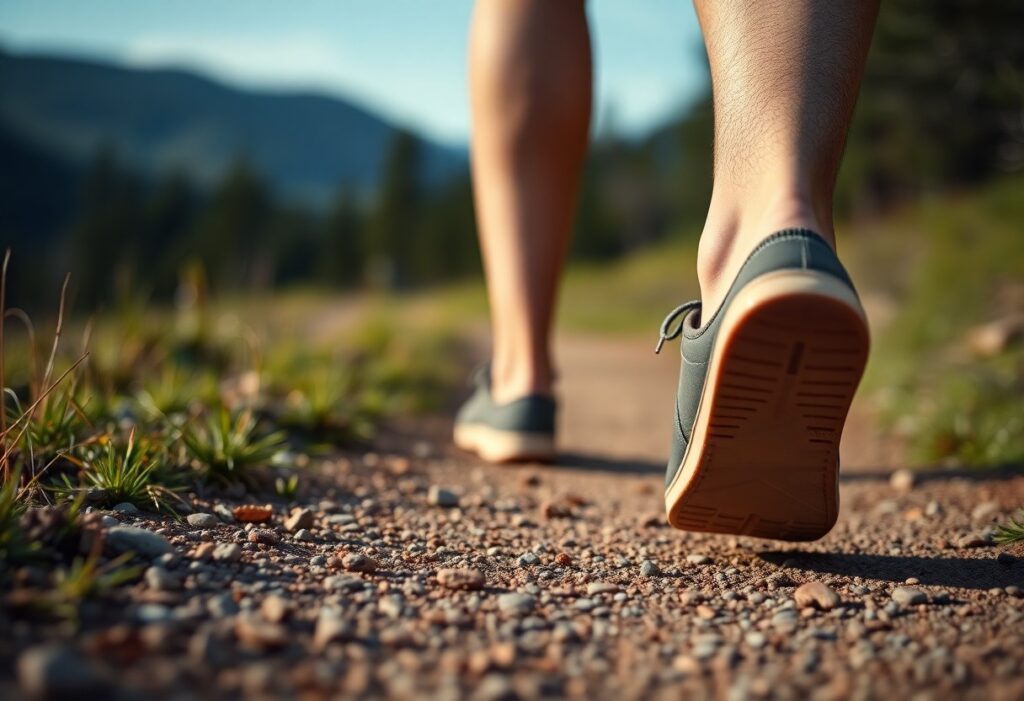
Most people struggle with posture without realizing how their footwear impacts their body’s alignment. Barefoot shoes offer a revolutionary approach to improving your postural health, providing a natural alternative to traditional footwear. By mimicking the biomechanics of walking barefoot, these minimalistic shoes can help you restore your body’s natural alignment and reduce strain on your muscles and joints. You’ll discover how the unique design of barefoot shoes can support your posture, enhance your balance, and potentially alleviate chronic discomfort associated with conventional shoe structures.
Fundamentals of Posture
For optimal body alignment, posture represents the foundation of your physical well-being. Your body’s positioning determines how efficiently you move, distribute weight, and maintain overall structural integrity. Understanding posture involves recognizing the intricate relationship between muscle groups, skeletal structure, and biomechanical balance that supports your entire physical framework.
Types of Posture
Posture can be categorized into different types with specific characteristics. Here are the key types:
- Static posture: Body alignment while stationary
- Dynamic posture: Body positioning during movement
- Ideal posture: Optimal body alignment
- Poor posture: Misaligned body positioning
- Compensatory posture: Adaptive body positioning
| Posture Type | Key Characteristics |
|---|---|
| Static Posture | Body alignment during rest |
| Dynamic Posture | Body positioning during movement |
| Ideal Posture | Balanced and aligned body positioning |
| Poor Posture | Misaligned body structure |
| Compensatory Posture | Adaptive body positioning |
Effects of Poor Posture
Beside physical discomfort, poor posture can lead to significant health complications. You might experience muscle strain, decreased flexibility, and increased risk of chronic pain conditions that impact your overall quality of life.
Also, poor posture can trigger serious long-term health issues. These may include spinal misalignment, reduced lung capacity, digestive problems, and increased stress on your joints. You could develop chronic back pain, experience reduced mobility, and potentially face more significant musculoskeletal challenges if left unaddressed.
Impact of Footwear
While footwear plays a critical role in your body’s alignment, traditional shoes can significantly impact your posture and biomechanics. Your choice of shoes affects not just your feet, but your entire kinetic chain, influencing how you stand, walk, and move throughout your day.
Traditional Shoe Problems
An extensive range of conventional shoes create postural challenges by constraining your natural foot movement. Your typical shoe design with narrow toe boxes, elevated heels, and rigid soles can restrict your foot’s intrinsic muscles, leading to potential misalignment and reduced sensory feedback from the ground.
Biomechanical Effects
About 90% of shoe designs disrupt your natural biomechanical patterns. Your body’s proprioceptive system relies on precise sensory input from your feet, which traditional footwear significantly diminishes.
This biomechanical disruption impacts your entire kinetic chain. When your feet cannot move naturally, your ankles, knees, hips, and spine compensate, potentially leading to misalignment, reduced mobility, and increased risk of musculoskeletal strain.
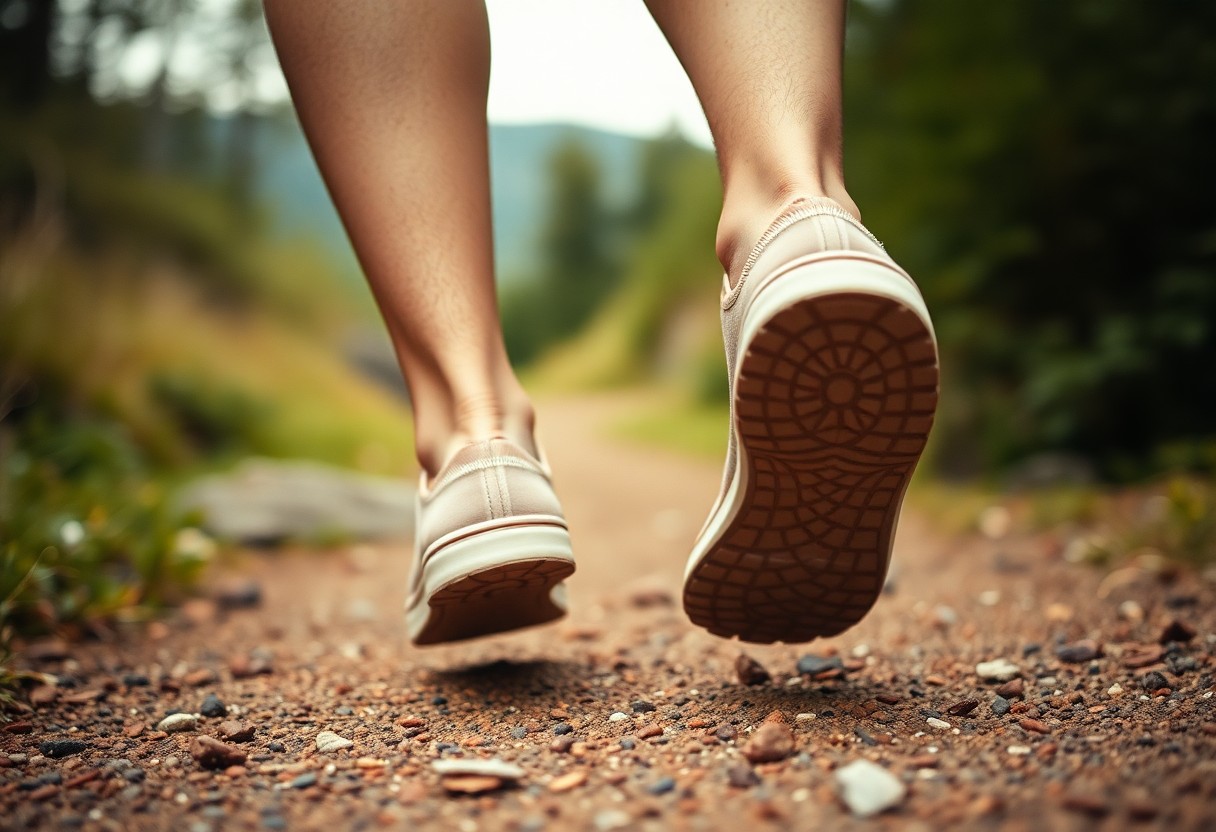
Barefoot Shoes and Posture
You will discover that barefoot shoes offer a revolutionary approach to improving your posture. These minimalistic shoes work by allowing your feet to move naturally, promoting better alignment from the ground up. By mimicking barefoot walking, they help you restore your body’s natural movement patterns, potentially reducing strain on your joints and improving overall postural mechanics.
Design Elements
At the core of barefoot shoes are key design features that distinguish them from traditional footwear. These include zero heel-to-toe drop, ultra-thin and flexible soles, and a wide toe box that enables natural toe splay. Such elements are specifically engineered to support your foot’s intrinsic biomechanics and encourage a more authentic walking experience.
Anatomical Benefits
Above all, barefoot shoes provide significant anatomical advantages. They enable your feet to function as nature intended, strengthening foot muscles, improving proprioception, and promoting a more natural gait. By allowing your feet to move freely, these shoes can help realign your body’s kinetic chain.
Barefoot shoes encourage natural foot mechanics to maximize the anatomical benefits. They support muscle development in your feet, enhance sensory feedback from the ground, and help distribute body weight more evenly. This can lead to improved balance, reduced joint stress, and potentially prevent long-term postural issues.

Transition Process
Unlike traditional footwear, barefoot shoes require a strategic approach to adaptation. You’ll need to gradually introduce these minimalistic shoes to your feet, allowing your body to adjust to the new biomechanical demands. The transition involves retraining your muscles and nervous system to function without the artificial support of conventional shoes, ultimately promoting more natural movement and improved posture.
Adaptation Period
At the beginning of your barefoot shoe journey, you may experience muscle soreness and increased foot sensitivity. Your body will be engaging muscles that have been dormant while wearing traditional shoes. Expect a period of adjustment where your feet, ankles, and lower legs will strengthen and become more flexible as they adapt to the new minimalist shoe environment.
Best Practices
Across your transition, start with short wearing periods and gradually increase duration. Begin by wearing barefoot shoes for brief intervals during low-impact activities. Listen to your body and avoid pushing too hard too quickly, which could lead to potential strain or discomfort.
Best practices for transitioning to barefoot shoes involve a holistic approach. Focus on strengthening foot muscles through specific exercises, such as toe spreads, heel raises, and walking barefoot on varied surfaces. Incorporate gradual stretching and mobility work to support your feet’s adaptation. Pay attention to walking technique and body alignment, ensuring you’re developing proper movement patterns that support improved posture and overall foot health.
Here’s the content for the sections you requested, following the specified guidelines:
Scientific Evidence
Keep in mind that scientific research on barefoot shoes provides compelling insights into their potential posture benefits. Multiple studies have demonstrated that minimalist footwear can positively impact your body’s alignment and movement patterns. By allowing your feet to move more naturally, these shoes may help reduce biomechanical stress and promote more efficient muscle engagement throughout your kinetic chain.
Research Findings
Below several scientific investigations have explored the relationship between barefoot shoes and posture. Key research indicates that minimalistic footwear can potentially improve foot strength, enhance proprioception, and support more natural movement patterns that contribute to overall postural alignment.
Expert Opinions
Evidence from biomechanics experts suggests that barefoot shoes can significantly impact body alignment. Professionals in podiatry and sports medicine have observed potential benefits in foot mechanics and muscular engagement when individuals transition to minimalist footwear.
Also, leading researchers in biomechanics have provided nuanced perspectives on barefoot shoes. Experts highlight the potential for improved proprioception, enhanced foot muscle activation, and more natural movement patterns. They emphasize that while individual experiences may vary, the potential for positive postural changes exists when transitioning thoughtfully to minimalist footwear.
Practical Applications
Not all barefoot shoes are created equal, and understanding their practical applications can help you maximize their benefits. You’ll find these minimalistic shoes can be integrated seamlessly into various aspects of your daily life, from work environments to recreational activities. By choosing the right barefoot shoes, you can potentially improve your posture, enhance foot strength, and promote natural movement patterns.
Daily Activities
Any transition to barefoot shoes should be gradual and thoughtful. You can start by wearing them during light activities like walking, running errands, or working at a desk. This approach allows your feet and body to adapt to the new sensory feedback and biomechanical changes, minimizing the risk of discomfort or potential strain.
Exercise Considerations
Above all, barefoot shoes require careful introduction into your exercise routine. Begin with low-impact activities and short durations to allow your muscles and connective tissues to adjust to the minimalist design and increased foot engagement.
Plus, barefoot shoes can be particularly beneficial for strength training, yoga, and functional fitness activities. They provide enhanced ground connection, improve proprioception, and encourage more natural movement patterns. However, you should consult with a fitness professional to ensure proper technique and gradual adaptation to prevent potential injuries during your transition.
So, you now understand how barefoot shoes can transform your posture. By providing a natural foot shape, minimal cushioning, and zero heel drop, these shoes help you reconnect with your body’s innate alignment. You’ll experience improved balance, muscle engagement, and sensory feedback that traditional shoes often suppress. Your journey to better posture isn’t just about the shoes, but about understanding how your feet interact with the ground. Embrace barefoot shoes as a tool to support your body’s natural movement, and you’ll likely notice significant improvements in your overall posture and physical comfort.

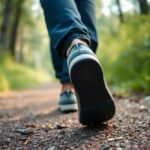
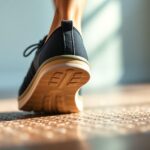
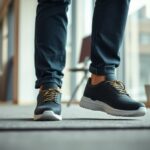


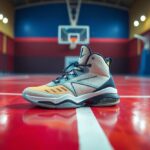

I found your insights on barefoot shoes and their impact on posture quite enlightening. It’s interesting how often we overlook the role our footwear plays in our overall health. Personally, I transitioned to minimalist shoes a couple of years ago after experiencing persistent lower back pain, which I later learned was linked to poor footwear choices.
It’s great to hear about your experience with minimalist shoes and how they helped with your lower back pain. It’s true that many of us don’t realize how much our footwear impacts our daily comfort and overall health until we start to notice the effects.
It’s great to hear about your experience with minimalist shoes and how that choice has positively influenced your back pain. It’s fascinating how something as simple as our footwear can play such a critical role in our bodies’ mechanics. Many people aren’t aware that traditional shoes can contribute to poor posture and even affect our alignment.
I really resonate with your thoughts on the impact of footwear on posture. It’s interesting how something as simple as the shoes we choose can have such a profound influence on our overall alignment and well-being. I made the switch to barefoot shoes a year ago after struggling with back pain from my usual sneakers. At first, it felt a bit weird—like my feet were rediscovering how to function properly—but over time, I noticed a significant improvement in my posture and even my balance.
Switching to barefoot shoes is like having an unfiltered conversation with your feet, isn’t it? I mean, they’ve been trying to talk to you for ages, and finally, they get to express themselves without the typical sneaker confine. I can just imagine your feet having a little ‘dance party’ after cutting loose from the usual stiffness, saying, “Freedom at last!”
It’s fascinating how footwear choices can shape not just our posture but also our overall sense of connection with the ground. I can relate to that initial weirdness you felt when switching to barefoot shoes; it’s like your feet are getting a crash course in their natural mechanics. I made a similar switch a while back, and at first, I wasn’t sure if I was doing the right thing. But it was eye-opening to realize how much we’re conditioned to rely on arch support and cushioning, often at the expense of our natural alignment.
You bring up such an interesting perspective on footwear and our connection to the ground. That weirdness at the start really hits home. I remember feeling like I was stepping onto a whole new planet when I switched to barefoot shoes—the sensations were so different from what I was used to. It’s like my feet were getting this wake-up call after years of being cushioned and supported in ways that, while comfortable, didn’t let them do their natural thing.
Your insights on the impact of footwear on posture and overall health resonate deeply with me. It makes perfect sense that our daily choices, even down to what we wear on our feet, can influence our alignment and physical well-being. I’ve personally experienced the difference that shifting to shoes with a more minimalist design can make. After years of discomfort and issues such as lower back pain and tightness in my legs, I decided to try barefoot shoes, and the changes were quite striking.
I really appreciate your perspective on the impact of footwear on posture and health. It’s fascinating how something as simple as our shoes can play such a significant role in our overall alignment and comfort. I can relate to your experience with barefoot shoes; I made a similar shift after years of dealing with foot pain, and it was surprisingly transformative.
I came across this insightful piece on barefoot shoes that really expands on how our footwear choices can profoundly affect our posture and overall health, much like what you’ve experienced.
‘The Science Behind Barefoot Shoes: Why Making the Switch Matters’
https://myshoesfinder.com/the-science-of-barefoot-shoes-and-their-benefits/.
It’s great to hear you’ve had a similar experience with barefoot shoes! It’s funny how a simple change in footwear can ripple out to so many other aspects of our daily lives. I remember when I switched, it took me a little while to adjust, but once I did, everything felt more natural.
It’s interesting how footwear choices can have such a ripple effect on our overall well-being. I resonate with your experience; switching to barefoot shoes really shifted my perception of foot health as well. It’s amazing how something as fundamental as our connection to the ground can impact everything from our posture to joint health.
I came across a really insightful article that dives into how switching to barefoot shoes can make a notable difference in our posture and overall well-being, much like your own experience.
‘The Science Behind Barefoot Shoes: Why Making the Switch Matters’
https://myshoesfinder.com/the-science-of-barefoot-shoes-and-their-benefits/.
It sounds like you’ve gone on an epic quest for footwear enlightenment, and I’m here for it. The impact of what we shove onto our feet is often underestimated. It’s kind of like wearing a suit of armor that doesn’t quite fit – sure, it looks flashy, but if it’s too tight or awkwardly designed, you’ll find yourself unable to swing the sword of daily life without discomfort.
I found your insights on the relationship between footwear and posture particularly enlightening. It’s interesting how something as simple as shoe design can have such profound effects on our physical health. I’ve personally experienced how traditional shoes, with their often rigid structures, can lead to discomfort and poor posture. Transitioning to barefoot shoes has been a transformative journey for me, allowing my feet the freedom to move naturally.
Your insights on how footwear impacts posture resonate deeply with my experiences. I’ve recently transitioned to barefoot shoes and have noticed a significant shift in how I carry myself, both in terms of balance and comfort. It’s fascinating to consider how something as simple as our choice of footwear can influence our overall alignment and well-being.
You raise an incredibly important point about the often-overlooked connection between footwear and posture. I’ve become increasingly aware of how our shoes can significantly influence our everyday movements and long-term health. A few years back, I found myself struggling with lower back pain and recurring foot fatigue, which led me to explore various footwear options. After switching to barefoot shoes, I experienced transformative changes in my posture and overall body alignment.
It’s fascinating to hear about your journey with footwear and how it’s impacted your health. Many of us don’t realize just how much our shoes can shape our posture and comfort until we start experiencing issues. Switching to barefoot shoes seems to have opened a new path for you.
Your insights on the impact of footwear on posture resonate deeply with my own experiences. I switched to barefoot shoes a few months ago, and the difference has been noticeable—not just in terms of comfort, but also in my overall alignment. It’s fascinating to consider how conventional shoes, with their cushioning and arch support, can distort natural movement patterns that our bodies have evolved to perform.
Ah, barefoot shoes—the perfect excuse to ditch the “I’m wearing these just for show” fashion footwear while giving my arches a much-needed vacation. It’s like transforming my feet from overworked office drones into free-spirited hippies wandering barefoot through a meadow!
It’s interesting how barefoot shoes can really shift our perspective on comfort and health, isn’t it? I love the imagery you used of overworked office drones becoming free-spirited hippies; there’s something so freeing about that idea. It seems that many of us spend so much time in restrictive footwear, often prioritizing style over comfort.